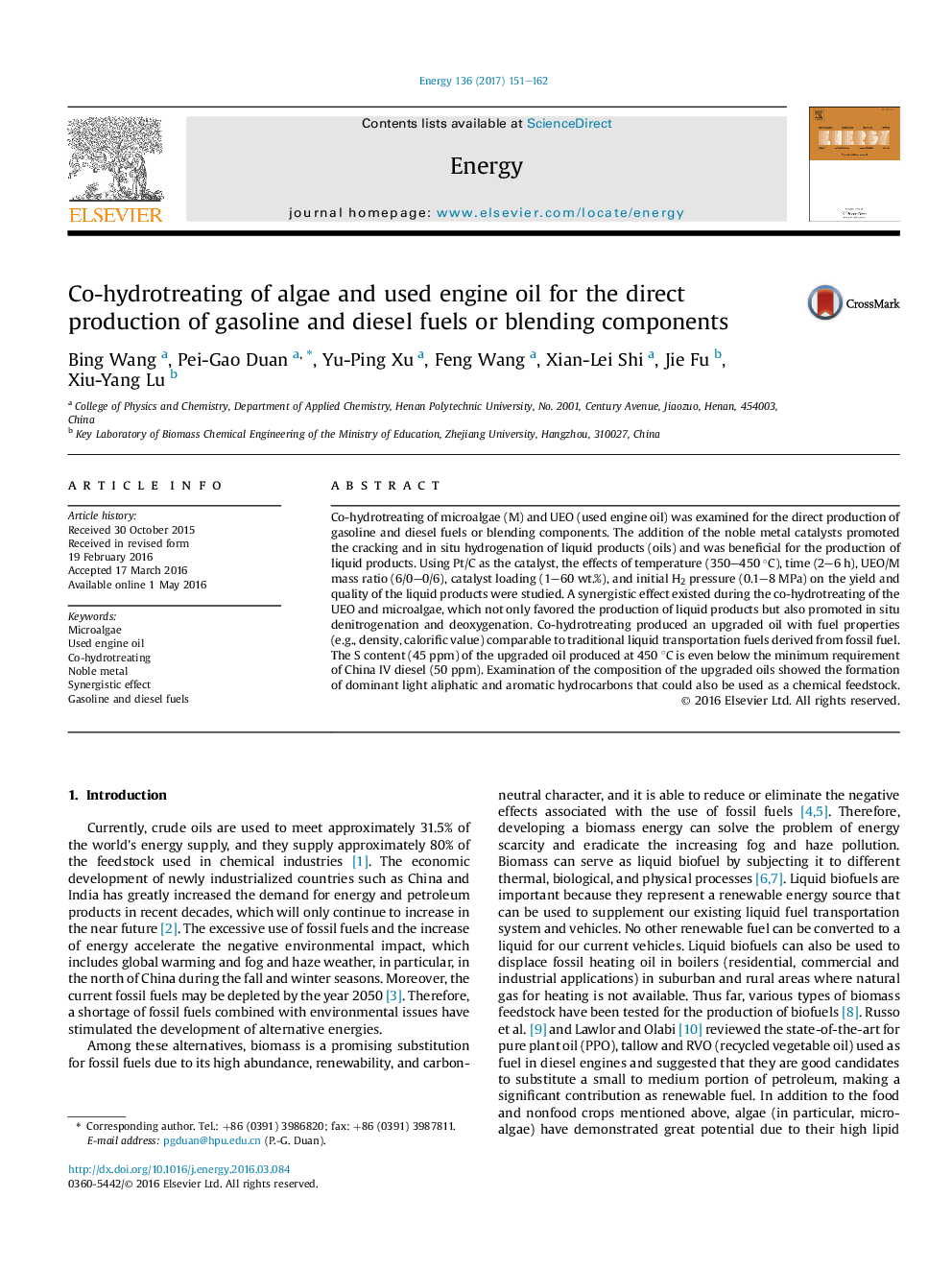| Article ID | Journal | Published Year | Pages | File Type |
|---|---|---|---|---|
| 5475725 | Energy | 2017 | 12 Pages |
â¢Pt/C was identified as the most suitable catalyst.â¢A synergistic effect existed during the in situ upgrading of the UEO (used engine oil) and microalgae.â¢Denitrogenation and desulfurization reactions manly occurred at 350-400 °C.â¢All of the oils have an energy density higher than that of diesel fuel.â¢The S content of the oil is even below the minimum requirement of China IV diesel.
Co-hydrotreating of microalgae (M) and UEO (used engine oil) was examined for the direct production of gasoline and diesel fuels or blending components. The addition of the noble metal catalysts promoted the cracking and in situ hydrogenation of liquid products (oils) and was beneficial for the production of liquid products. Using Pt/C as the catalyst, the effects of temperature (350-450 °C), time (2-6 h), UEO/M mass ratio (6/0-0/6), catalyst loading (1-60 wt.%), and initial H2 pressure (0.1-8 MPa) on the yield and quality of the liquid products were studied. A synergistic effect existed during the co-hydrotreating of the UEO and microalgae, which not only favored the production of liquid products but also promoted in situ denitrogenation and deoxygenation. Co-hydrotreating produced an upgraded oil with fuel properties (e.g., density, calorific value) comparable to traditional liquid transportation fuels derived from fossil fuel. The S content (45 ppm) of the upgraded oil produced at 450 °C is even below the minimum requirement of China IV diesel (50 ppm). Examination of the composition of the upgraded oils showed the formation of dominant light aliphatic and aromatic hydrocarbons that could also be used as a chemical feedstock.
